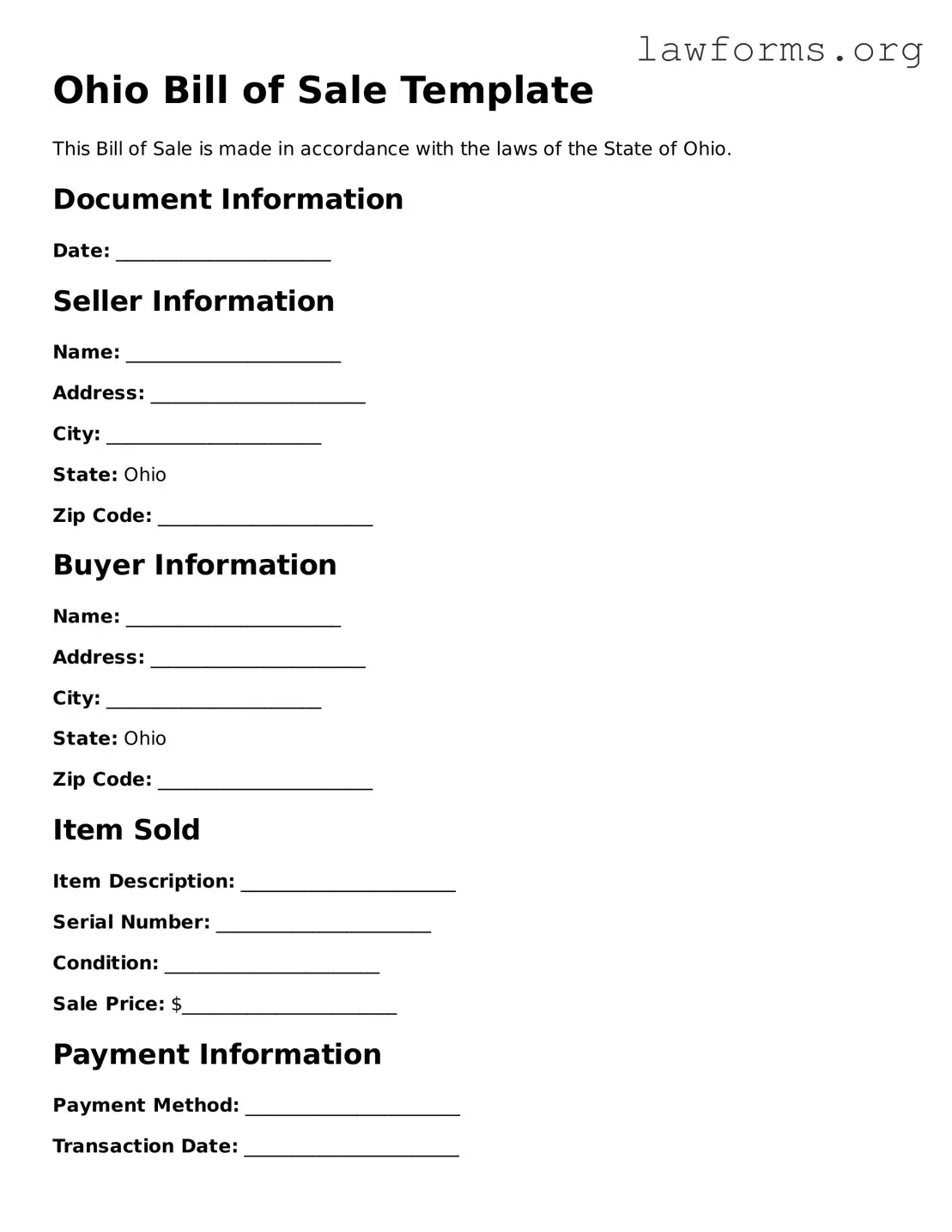Ohio Bill of Sale Template
This Bill of Sale is made in accordance with the laws of the State of Ohio.
Document Information
Date: _______________________
Seller Information
Name: _______________________
Address: _______________________
City: _______________________
State: Ohio
Zip Code: _______________________
Buyer Information
Name: _______________________
Address: _______________________
City: _______________________
State: Ohio
Zip Code: _______________________
Item Sold
Item Description: _______________________
Serial Number: _______________________
Condition: _______________________
Sale Price: $_______________________
Payment Information
Payment Method: _______________________
Transaction Date: _______________________
Signatures
The undersigned hereby affirm that the above information is accurate and complete.
- Seller Signature: _______________________
- Buyer Signature: _______________________
Witness Information (optional)
Witness Name: _______________________
Witness Signature: _______________________
Notary Public (optional)
State of Ohio
County of _______________________
Subscribed and sworn before me this _____ day of _____________, 20__.
Notary Public Signature: _______________________
My Commission Expires: _______________________
Please retain a copy of this Bill of Sale for your records.
